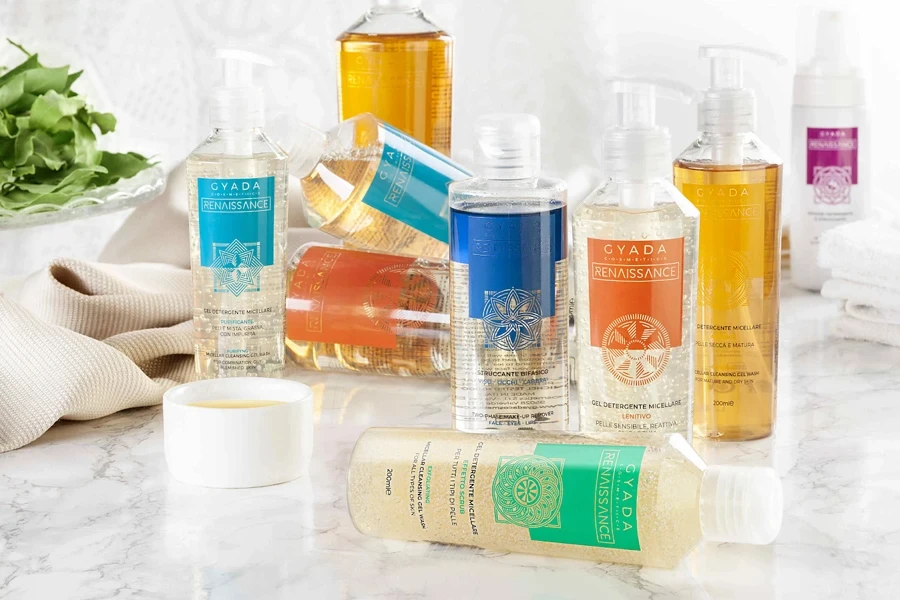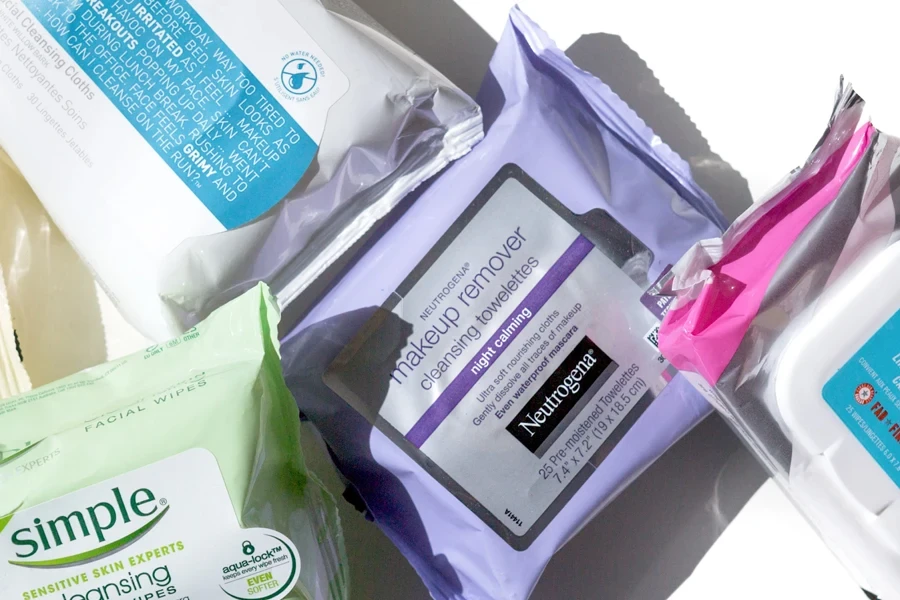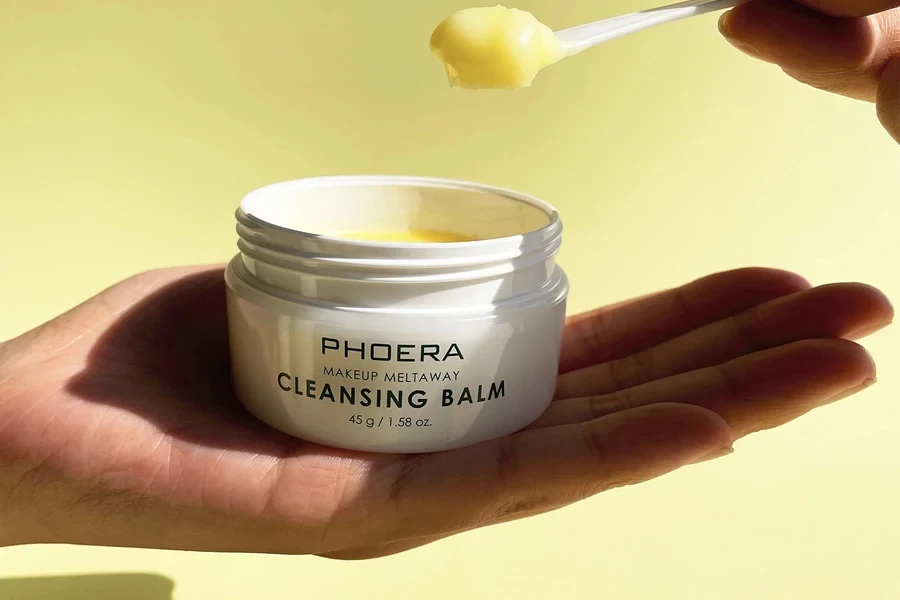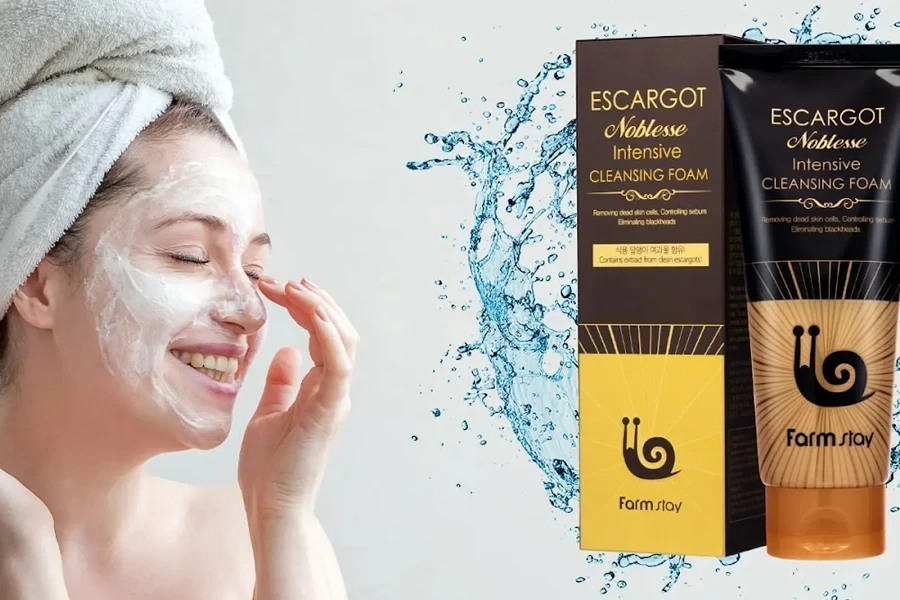What’s the point of a product if it doesn’t do what it’s supposed to? Removers help make the makeup removal process less of a chore. But it’s easy for consumers to choose the wrong products, which may make a tired night even more frustrating for them.
What if the product irritates their skin? Or is it not removing the makeup effectively? These questions are what consumers think about when purchasing makeup removers.
Thankfully, businesses don’t have to worry about selling the wrong products or failing to meet consumer requirements—they only need a guide.
This article will do just that! Keep reading to learn what to prioritize when choosing makeup removers in 2024.
Table of Contents
An overview of the makeup remover market
Types of makeup removers
Important aspects to prioritize when selecting makeup removers in 2024
Wrapping up
An overview of the makeup remover market
Experts say the global makeup remover market was valued at USD 2.3 billion in 2021. On top of this, they expect the market’s value to register a compound annual growth rate (CAGR) of 6.5% over the forecast period of 2022 to 2023, reaching a value of USD 4.3 billion.
Makeup removers are registering impressive growth due to the increasing demand for waterproof cosmetics. For this reason, consumers can use water to clean their makeup, pushing them toward makeup removers and propelling market growth.
Europe emerged as the regional market leader, accounting for the largest share of global sales. Experts attribute the region’s growth to the large population demanding easy ways to remove makeup and rising interest in cosmetics.
Types of makeup removers
Micellar water

Micellar water is one of the most popular (and effective) makeup removers around—with an average monthly search volume of 27,100 queries on Google. These water-based cleansers have tiny molecules (A.K.A. micelles) that gently remove sebum, makeup, and dirt.
The best part? Micellar water is incredibly convenient. Women only need to soak a cotton pad with this product and wipe their face—simple and effective! Ladies can even use this product while doing other activities, like relaxing on a sofa or watching TV.
But that’s not all. Micellar water also has a no-rinse formula, allowing women to avoid stressful bathroom trips. Plus, manufacturers make them with different formulas, making it easy for women to find their preferred options.
Nevertheless, micellar water is the go-to for removing makeup with light-to-medium coverage. It can also handle dirt or sunblock, even without makeup.
Makeup remover wipes

Micellar water may be famous for its convenience, but one product offers something even better: makeup remover wipes, with an impressive 1,900 monthly search queries. These no-fuss, no-rinse solutions are one of the quickest ways to wipe away traces of makeup.
They come pre-soaked in makeup remover solutions (like micellar water) and tucked neatly in portable packs, making them perfect for on-the-go makeup removal. But there’s more! They’re also a great way to refresh the skin anytime, anywhere, making these wipes favorites for busy individuals.
Makeup remover wipes can also handle makeup with light-to-medium coverage. And they can help cleanse impurities from makeup-free faces.
Cleansing oil

When it comes to stubborn makeup, none handles it like cleansing oils, accumulating 5,400 search queries on an average every month on Google. These makeup removers emulsify with water to provide deep-cleansing properties, which can tackle even the most stubborn makeup easily.
However, cleansing oils offer the best results in a double-cleansing routine. After gently massaging these oils, ladies must rinse them off with water and follow up with facial cleansers—so these makeup removers are not travel-friendly.
Although they can remove heavy makeup, cleansing oils have a catch. They can rob the skin of its natural moisture. Hence, sellers must choose formulations and ingredients suitable for their target consumer’s skin.
Cleansing balm

Cleansing balms are similar to their oil cousins. However, they come in a solid form before melting into an oily structure after application.
And unlike cleansing oils, balms do not strip all the natural moisture away. Instead, they’ll leave the skin feeling soft while removing makeup and dirt. Hence, it’s no surprise that they get an averaged 5,400 queries on Google monthly.
Since they’re moisturizing in nature, cleansing balms are also compatible with all skin types. They have no business with skin pores so that oily-skinned consumers can use them as their go-to makeup removers.
Cleansing foams

These are also water-based makeup removers. They come with surfactants to help create a foamy lather for effective makeup removal. Since consumers mix them with water before use, they have an easier time lifting dirt and makeup from the face.
Cleansing foams, with their decent 50 search queries every month, are the best cleansers for oily and acne-prone skin, as their lather can also remove excess moisture. However, they may be too harsh for dry-skinned consumers—it will leave their skin parched, making following up with a moisturizer compulsory.
Important aspects to prioritize when selecting makeup removers in 2024
Stock based on the target skin type
After consumers choose their preferred makeup remover, formulation is the next thing they’ll consider. And they make this decision based on their skin type. Here’s a walkthrough of the different skin types and makeup remover formula requirements:
| Skin type | Compatible makeup remover formula |
| Sensitive | These consumers prefer water-based makeup removers (like micellar water) with an ultra-gentle formula. They’ll avoid oil-based cleansers, containing ingredients that will dry and aggravate their skin. |
| Dry to combination skin | These consumers also avoid oil-based makeup removers to prevent their skin from dehydrating. Instead, they’ll choose lighter, no-rinse formulas like wipes or micellar water. But not just any no-rinse formula. The preferred product must also contain hydration-boosting ingredients to keep their skin soft. They can also use cleansing balms for their moisturizing properties. |
| Oily to combination skin | These consumers are better off with makeup removers that won’t clog their pores. Hence, businesses can offer water-based removers (cleansing foams and micellar water) and wipes. The hydrating ingredients in these removers will help them control sebum production. |
| Dull skin with clogged pores | These consumers need deep cleansing products to remove the makeup residues. So, sellers can offer them cleansing oils and balms to deeply purify pores, eliminating all impurities and dirt. |
| Acne-prone | These consumers will appreciate gentle, water-based removers with anti-bacterial formulations. |
What’s the target’s lifestyle?
The consumer’s lifestyle also plays a huge role in determining their perfect makeup remover. They’ll consider things like: “Where and when will I remove my makeup?” “Would I need cotton pads?” Or “Is access to a sink necessary.” Here’s how these questions help determine the most ideal makeup removers.
If consumers prefer quickly wiping off their makeup, especially when on the go, makeup remover wipes are a no-brainer. They’re the most convenient choice for this lifestyle due to their use-and-discard nature.
What if women are at home but still don’t want the hassle of full-blown make removal routines? They’ll see low-effort micellar water as the most efficient way to wipe their makeup—and they’ll be ready to buy those extra cotton pads.
Now, not everyone loves the quick and easy life. Some consumers prefer indulging in complete skincare rituals at home. Usually, they’re also ready to take the consequences of applying full or high-coverage makeup. Therefore, such consumers move toward cleansing oils and balms.
Eye makeup removal is a different ball game
Removing eye makeup requires something different. The area around the eyes is more sensitive than the face and body, so ladies must use other products if they don’t want to irritate it.
More importantly, eye makeup (like waterproof eyeliner and mascara) is usually long-lasting and notorious for being difficult to remove. Sellers hoping to attract this niche must focus on a different product: eye and lip makeup remover.
Eye and lip makeup removers can easily remove difficult makeup from these sensitive areas without damaging the delicate skin. Most have bi-phase formulas featuring oily and aqueous layers, allowing them to tackle waterproof or heavy eye makeup.
Avoid harsh ingredients
Many makeup removers have alcohol as one of their main ingredients. Alcohol easily breaks down makeup’s tough chemical composition, so most people would think it’s a great ingredient for these products. Unfortunately, continuously using alcohol-based removers can damage the skin, so it’s safer for businesses to avoid selling them.
Fragrances and preservatives are another big no. Although fragrances make makeup removers more attractive (who wouldn’t want a burst of nice scents?), they can irritate sensitive skin and cause allergic reactions.
Fragrance-free removers are also recommended for target consumers with acne. This will avoid irritating the skin and causing more issues. Although people without sensitive skin can use products with fragrances, the recent trend says the purer, the better!
Wrapping up
Makeup removers should help remove tough makeup, not add more problems to the consumer’s face. That’s why consumers don’t just choose any makeup remover they see on shelves or in online stores.
Although women are now more conscious of their purchases, businesses can stay ahead of them by understanding their needs for stocking up. Think about the target consumer’s lifestyle and skin type before marketing offers to them.
Remember to avoid makeup removers with harsh ingredients and offer different products for stubborn eye makeup. Following these tips will increase the chances of attracting consumers interested in makeup removers in 2024.




